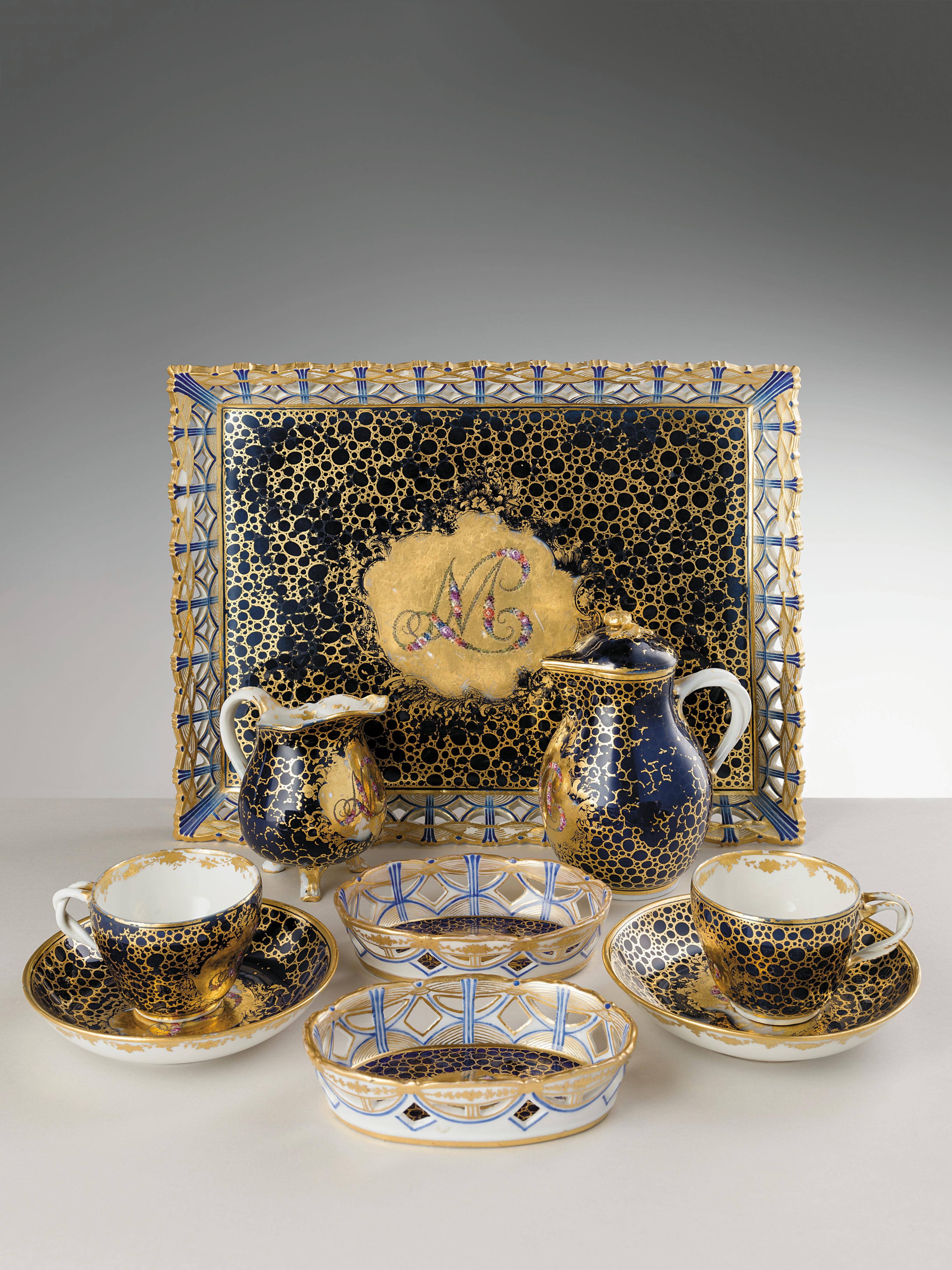Coffee tête-à-tête with ML monogramming
Imperial Porcelain Manufactory, Vienna; Ginori Manufactory, Doccia (restocking)
Mark Blue shield underglaze (Imperial Porcelain Manufactory, Vienna: coffee pot, cups and a saucer); gold star underglaze (Ginori Manufactory, Doccia: sugar bowl)
Inscription 18 (to be identified with the turner Jakob Herold, under one saucer), 17 (to be identified with the turner Mathias Ruttner, under the cups) stamped
The service is inspired by specimens made by the Manufactories of Vincennes and Sèvres around 1755-1760 and in particular by those sent in 1758 by Louis XV, King of France, to Maria Theresa of Austria following the alliance they had established in 1757 during the War of the Austrian Succession and strengthened by the marriage in 1770 of the Empress’s daughter, Marie Antoinette to Louis XVI, the Dauphin of France. This is the gift of three services, one for serving, one for dessert and a breakfast coffee service, which could be varied with the tea or chocolate service. These déjeuners, intended for the tasting of exotic beverages, had great success since the 18th century at the Courts, and since they were often given as gifts, they could be personalised with the initials of the name of the person for whom they were intended. An example of this is the monogram “ML” depicted on our specimen with a refined garland of finely painted flowers. Evident is the dedication to Marie Louise, daughter of Don Carlos of Bourbon and wife of Peter Leopold Habsburg-Lorraine, but the reasons for its arrival in the Palace of the Pitti Palace are not known, as we only have records of it in the inventories from 1795.
It consists of a milk jug, a coffee pot, two cups, two sugar bowls and a rectangular tray, which leads one to attribute it to the type of service called déjeuner tiroir in the Sèvres Manufactory. The Viennese factory invented the basket shape of the sugar bowls, as sugar was served in lumps. The originals were broken in 1814 and replaced in 1840 by the Ginori Manufactory, as attested by the gold star mark under the base.
Particularly interesting is the choice to evoke the “bleu lapis caillouté” decoration, also inspired by the Sèvres Manufactory and visible on a flower vase made by the same factory, now preserved in the Porcelain Museum (inv. A.c.e. 1911 no. 901). The bleu-de-roi background, introduced by the Viennese factory only from 1770, enlivened by the gilded motif reminiscent of the shape of pebbles(caillouté), reveals in the French factory a probable source of inspiration in the mineralogical studies that were being carried out at the time, as witnessed, for example, by Dezallier d’Angerville’s treatise L’Histoire naturelle printed in 1755.
